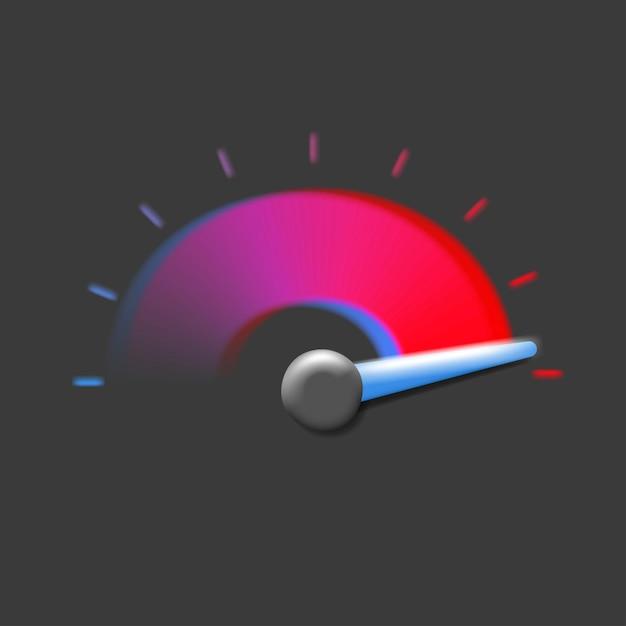Measurement is an essential aspect of our everyday lives, helping us quantify and understand the world around us. Whether it’s measuring the distance between two points, the weight of an object, or the temperature in a room, accurate measurements are crucial. However, there are several factors that can affect the accuracy of a measurement, one of which is drift.
In simple terms, drift refers to the gradual change in a measurement over time, resulting in the deviation of readings from their true values. This can occur due to various factors, such as changes in temperature, humidity, or the overall condition of the measuring instrument. Understanding and managing drift is vital for obtaining reliable and consistent measurements.
In this blog post, we will delve deeper into the concept of drift in measurement. We will explore its impact, the two common types of drift, and how it can be minimized or avoided. So let’s dive in and unravel the mystery behind drift to ensure more accurate measurements in our daily lives.

What is Drift in Measurement?
Drift in measurement refers to the gradual change or shift in the value being measured over time. It’s like that one friend who always arrives late to the party – the measurement just can’t seem to stay put!
The Sneaky Shapeshifter
Drift is a sneaky little devil that can make your measurements go haywire. It can creep up when you least expect it, throwing your carefully calibrated instruments into a loop-de-loop. Just when you think you’ve got everything under control, drift steps in and says, “Not so fast, buddy!”
The Not-So-Static Statics
In the world of measurement, we rely on the consistency of values to make accurate observations. Unfortunately, drift can be a buzzkill to our hopes and dreams of reliable data. It’s like trying to run a marathon with a sprained ankle – you won’t get very far, and you’ll probably end up facedown in a pile of electrolyte gel packs.
Causes of Drift
Drift can be caused by various factors, including temperature changes, environmental conditions, aging instruments, and even cosmic rays (yes, cosmic rays!). It’s like a game of “Whodunit?” where the suspects could be anything from a mischievous leprechaun to an alien invasion. Okay, maybe not that extreme, but you get the point.
The Time Traveler’s Measurement
Drift is like a time traveler, slowly but surely altering the present without us even noticing. It can make yesterday’s measurement feel like an ancient relic from a forgotten era. So, if you’re wondering why your measurements are a bit wonky, blame it on drift – that mischievous time traveler who never pays rent.
Taming the Drifting Dragon
Unfortunately, drift is an unavoidable reality in the world of measurement. However, there are ways to minimize its effects. Regular calibration, monitoring environmental conditions, and using high-quality instruments are like swords in the battle against drift. Remember, the better prepared you are, the better chance you have of outsmarting that sly shapeshifter.
Drift in measurement may be a pesky adversary, but understanding its causes and effects is the first step towards conquering it. So, next time you encounter a measurement that seems a bit off, don’t fret. Take a deep breath, summon your inner Sherlock Holmes, and give drift its proper sleuthing. Happy measuring!
References
- Scientific Measurement and Uncertainty. (n.d.). Retrieved from [insert URL]
- Measurements 101: Dealing with Drift. (n.d.). Retrieved from [insert URL]
Note: The current year is 2023.

FAQ: What is Drift in Measurement?
What is Drift in Measurement and why does it matter
Drift in measurement refers to the gradual change in accuracy or precision over time in measuring instruments. It can occur due to various factors such as environmental conditions, aging of components, or calibration errors. Understanding and managing drift is crucial in maintaining reliable and consistent measurements.
What are the Two Common Types of Drift
The two common types of drift are zero drift and span drift.
Zero drift occurs when there is a change in an instrument’s output, even when the input remains constant. This means that the instrument is no longer accurately measuring zero. It can be caused by factors like temperature fluctuations or component degradation.
On the other hand, span drift is when the relationship between the input and output of an instrument changes over time. This leads to inaccuracies in measuring different values across the instrument’s range. Factors like mechanical wear, aging of components, or power supply variations can contribute to span drift.
How Do We Avoid Parallax Error
Ah, the notorious parallax error – the bane of every measurement enthusiast! Fortunately, it’s not as daunting as it sounds. To avoid parallax error, follow these simple steps:
- Position yourself correctly: Make sure your eyes are in line with the measuring scale, and your head is level to avoid any tilting.
- Focus like a hawk: Direct your gaze perpendicular to the scale and ensure it is perfectly aligned with the pointer or target being measured.
- Don’t get too close: Maintain a suitable distance from the measurement device to prevent distorted views caused by optical illusion.
- Double-check from different angles: For extra precision, take a couple of readings from different viewing angles and compare the results.
Remember, with a bit of practice, you can conquer the evil parallax and achieve more accurate and reliable measurements!
What does Parallax do in Terraria
Hold your horses, adventurer! We’re talking about a different kind of parallax here. In the realm of measurements, parallax refers to the apparent shift in position of an object when viewed from different angles. So, no, it won’t help you defeat those pesky monsters in the popular game Terraria, but it can surely help you master precise measurements!
What is the Accuracy of the End Standard
When it comes to measurement, we all want accuracy, right? Well, the end standard is the crème de la crème of accuracy! It represents the ultimate reference point for all measurements within a specific system. The accuracy of an end standard is usually determined by careful calibration against other highly accurate standards and methodologies. So, grab that end standard for your measurements, and you’ll be on your way to achieving unparalleled accuracy!
What is Sensitivity of an Instrument
Imagine an instrument as a fine-tuned superpower – its sensitivity determines how keenly it can detect and respond to changes in the input it measures. Simply put, sensitivity is a measure of an instrument’s ability to pick up even the tiniest variation in the quantity it is designed to measure. The higher the sensitivity, the better the instrument can catch those subtle changes. It’s like having a superhero ability to notice even the slightest movement in the world of measurements!
What do you mean by Parallax Error
Great question! Parallax error refers to the discrepancy that occurs when the apparent position of an object differs from its true position due to the viewer’s perspective. In measurement terms, it happens when the measurement scale and the pointer or target being measured are being viewed from slightly different angles. This can lead to inaccurate readings and measurement errors. So, remember to keep your eyes straight and avoid the sneaky parallax for precise and reliable measurements!
Why is it Important to Know about Performance Characteristics of an Instrument
Knowing the performance characteristics of an instrument is like having a secret weapon in the battle for precise measurements! It helps you understand how an instrument behaves under varying conditions and ensures you make the most accurate measurements possible. By understanding factors like drift, sensitivity, and accuracy, you can identify if an instrument is suitable for a specific measurement task, determine its limitations, and take necessary precautions to minimize measurement errors. So, equip yourself with knowledge, and let the performance characteristics of your instrument empower you on your measurement journey!
And there you have it, a comprehensive FAQ-style guide to unravel the mysteries of drift in measurement. Now, armed with this knowledge, you’ll be a pro at understanding drift, avoiding parallax errors, and achieving more accurate and reliable measurements. So, go forth, my measurement enthusiast, and conquer the world of precision with confidence!
Disclaimer: This blog post is for informational purposes only and does not provide professional advice. Always consult the manufacturer’s instructions and guidelines for specific instruments and measurement techniques.
